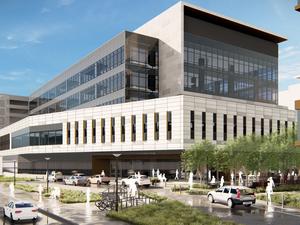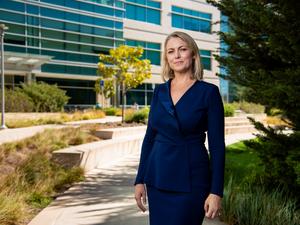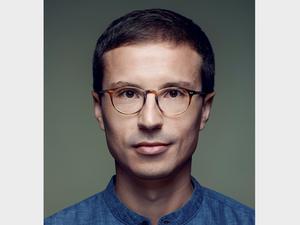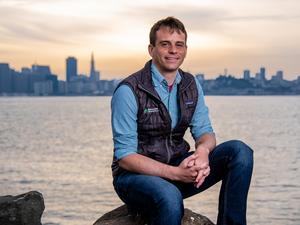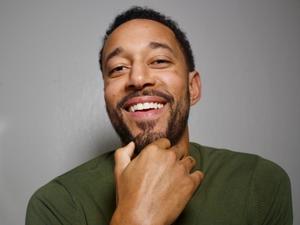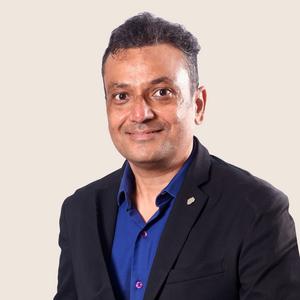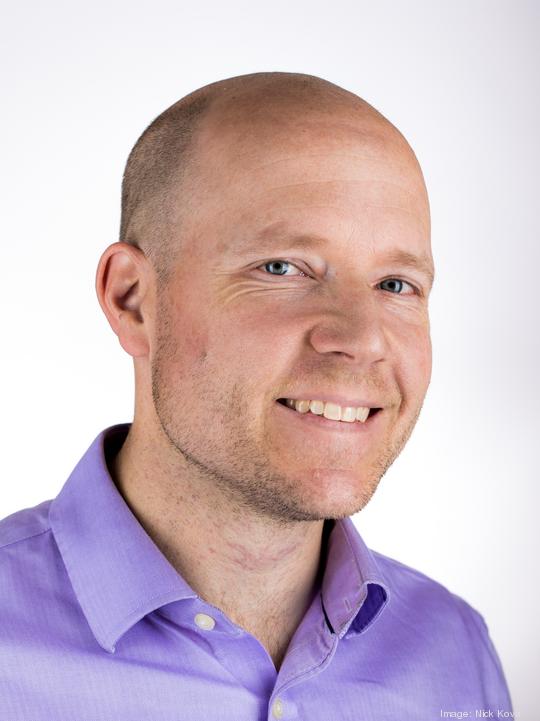
After two decades reshaping brain signals — including an FDA-approved way to prevent epileptic seizures — Brett Wingeier is now focused on a precise and fast-acting way to overcome depression, an area which has proven resistant to medication-based therapies.
The effort, called Magnus Medical Inc., scored a $25 million Series A round co-led by Jazz Venture Partners and Red Tree Venture Capital, the company said Thursday, with a hope to win Food and Drug Administration clearance of its medical device in the first half of next year.
The year-old Burlingame-based startup is the latest company zeroing in on the brain, thanks in part to forces including new imaging techniques, artificial intelligence advancements and other technologies developed over the past decade. Just this month, Neumora Therapeutics Inc. emerged with a $400 million Series A round and two drugs in clinical trials against depression and anxiety disorder, and startup Alto Neuroscience disclosed it has three drugs in mid-stage studies for depression and post-traumatic stress disorder.
But 11-person Magnus stands out, if only because it isn't offering a drug. Its non-invasive neurostimulation uses electromagnetic coil that delivers pulses that feel like a tapping sensation on the head over multiple 10-minute sessions. Within five days, the company says, symptoms of depression improve, including thoughts of suicide.
"Medications don't work very well," said Magnus CEO Wingeier. "In no case is there something that works fast and well."
Magnus' technology, developed at Stanford University by co-founder Dr. Brandon Bentzley, uses functional magnetic resonance imaging, or MRI, to figure out an individual patient's sweet spot. That's important because as little as a 2 centimeter difference can change the outcome of therapy.
Magnus then combines that information with an algorithm that sets dosing and a pattern for sessions.
The technology, which Magnus has branded as Saint, is far different from old-school electroconvulsive therapy, also known as electroshock. While effective, Wingeier said, electroshock can take several weeks to work. What's more, patients are put under general anesthesia during sessions and can experience seizures for weeks.
With Saint, after brain imaging, a patient sits back in a chair as a technician places the electromagnetic coil in the right places on the head for 10 sessions a day over five days with 50-minute breaks between sessions. In effect, the device creates training circuits in the brain and no general anesthesia is necessary.
Consider that the typical patient with acute depression could be cooped up in an emergency room or hospital for days as doctors try to tweak their medications in lieu of finding an inpatient bed. When they are treated, patients stay in a care facility an average of 8-1/2 days, Wingeier said — and they may emerge without feeling any better.
"It's a huge problem for the system, and there's a huge human cost there, too," Wingeier said.
Wingeier has been at this neuromodulation junction before. He was the principal biomedical engineer at Mountain View's NeuroPace Inc. for a dozen years, helping to develop a neurostimulation system that won FDA approval in 2014 to treat adult epilepsy patients unresponsive to anti-seizure medications. He then was a co-founder, CEO and chief technology officer of Halo Neuroscience as that San Francisco company developed a way for electrodes to activate nerves that boost muscle memory and enhance sports performance and more.
"It's a challenging industry," Wingeier said, but Magnus is the first project he's been associated with that offers as big of a population size and a big potential impact.
"It's the most compelling project I've ever been involved in," he said.
Nearly 20 million American adults had at least one major depressive episode, according to the federal Department of Health and Human Services' Substance Abuse and Mental Health Services Administration. Anecdotally those numbers have increased alongside social distancing and isolation due to the Covid-19 pandemic, and researchers are working to determine depression rates in recovered Covid patients.
That all could shape Magnus' future as it prepares to submit paperwork to the FDA by the end of the year for Saint's clearance. If all goes well, the agency could greenlight the system in the first half of 2022.
Saint already has "breakthrough" device designation from the FDA, which spotlights medical devices that potentially are more effective and accelerates their regulatory review.
In a pilot trial at Stanford, 19 of 21 Saint-treated patients entered remission. What's more, an advance online article on the American Journal of Psychiatry's website Friday said results of a double-blinded randomized controlled trial showed 11 of 14 treated with Saint had a "near elimination" of symptoms of depression, as judged by a common rating scale; only two of 15 patients in a placebo arm entered remission.
"The big picture is, there's an enormous human cost with depression. With every experience, the human cost mounts for the patient and family and friends," Wingeier aid. "For the first time, we've engineered treatment for a complicated psychiatric disease, and the goal is to keep people well for a lifetime."
